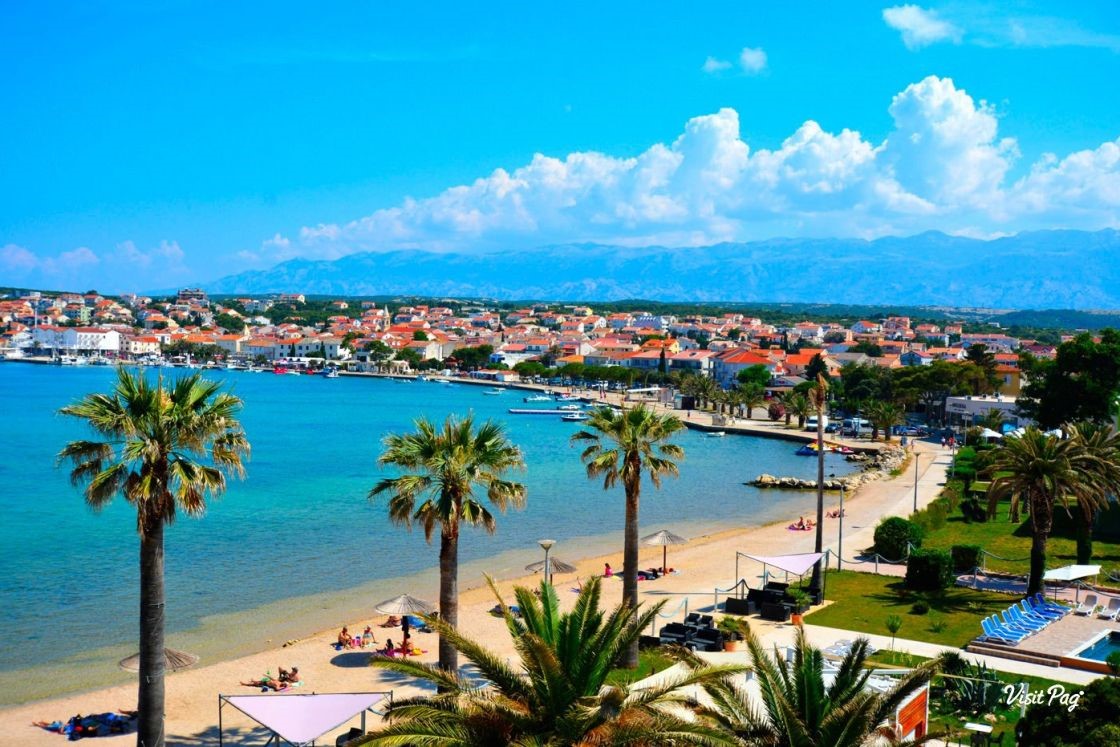
Novalja is a town located on the island of Pag, in the bay on the north side of the island. That is an excellent geographical position as it is in the middle of an important sea-way which connects the northern and southern Adriatic. Transport connections to the mainland from the island are great because during the summer, ferries are sailing all day and night on the line Prizna (coast) - Zigljen (island). Also, numerous daily bus lines connect Novalja with almost all parts of Croatia. According to population counts from year 2001, Novalja has 3400 inhabitants. Accommodation capacities are much greater and the number of tourists could reach 45,000 during summer. Novalja in recent years has become a very strong tourist destination, known far beyond Croatia, and has become a hit destination in the world, especially for young people. Accommodation capacities are enough to host really a large number of tourists in the hotels and private apartments. Definitely worth seeing is the City Museum in Novalja, especially because the inside of the building is underground water supply line which is entirely man-made carved in stone. Also, a few kilometers near Novalja, tourists are always impressed by shape in stone known as the Paski trokut (Pags triangle) which is supposed to have originated when a UFO was landing. Novalja is probably one of the most desirable destination for summer vacations in Croatia. Tourists of all generations are offered sport and cultural facilities, numerous parties, great gastronomic offers, and the large number of wonderful beaches in the immediate proximity of the town. Novalja has a long and interesting history, beginning with numerous archaeological discovers at various places around the town and its surrounding area. Among them are 3 Christian basilicas from the 4th and 5th centuries; the remains of the floor mosaic of one of these basilicas can be seen within the Gothic church of Our Lady of the Rosary in the town center. Many fragments of church furniture and other similar items are preserved in an archaeological collection called Stomorica. The Reliquary, found by one of the basilicas and now located in the Zadar Archaeological Museum, is also very valuable. One of the oldest illustrations of Our Lady with the inscription Maria ever found on the east coast of the Adriatic was found here in Novalja. In archaeological terms, the area of Caska is especially interesting and there have recently been investigations of the Roman settlement of Cisse, which legend says collapsed in an earthquake in the 4th century. A unique aqueduct carved out of solid rock dating back to the 1st century and measuring 1.2 km in length, 70 cm in width and 9 overhead openings up to 40 m in height, is one of the most interesting and valuable sites in the area. This one-of-a-kind Roman aqueduct, popularly known as the Italian's Hole, once supplied Novalja with water from the Novalja fields. The entrance to this water supply system is located inside the Town Museum, which boasts a range of Novalja's cultural and ethnological heritage. Highlights from the national treasury house include the "Nashki" local dance, performed in colorful folk costumes to the music of the local bagpipes. People also treasure the traditional two-part folk singing known as nakant, which has its own festival here, while the klapa (traditional a capella singing) groups Navalia (male) and Murtelice (female) preserve original Dalmatian folk songs.
